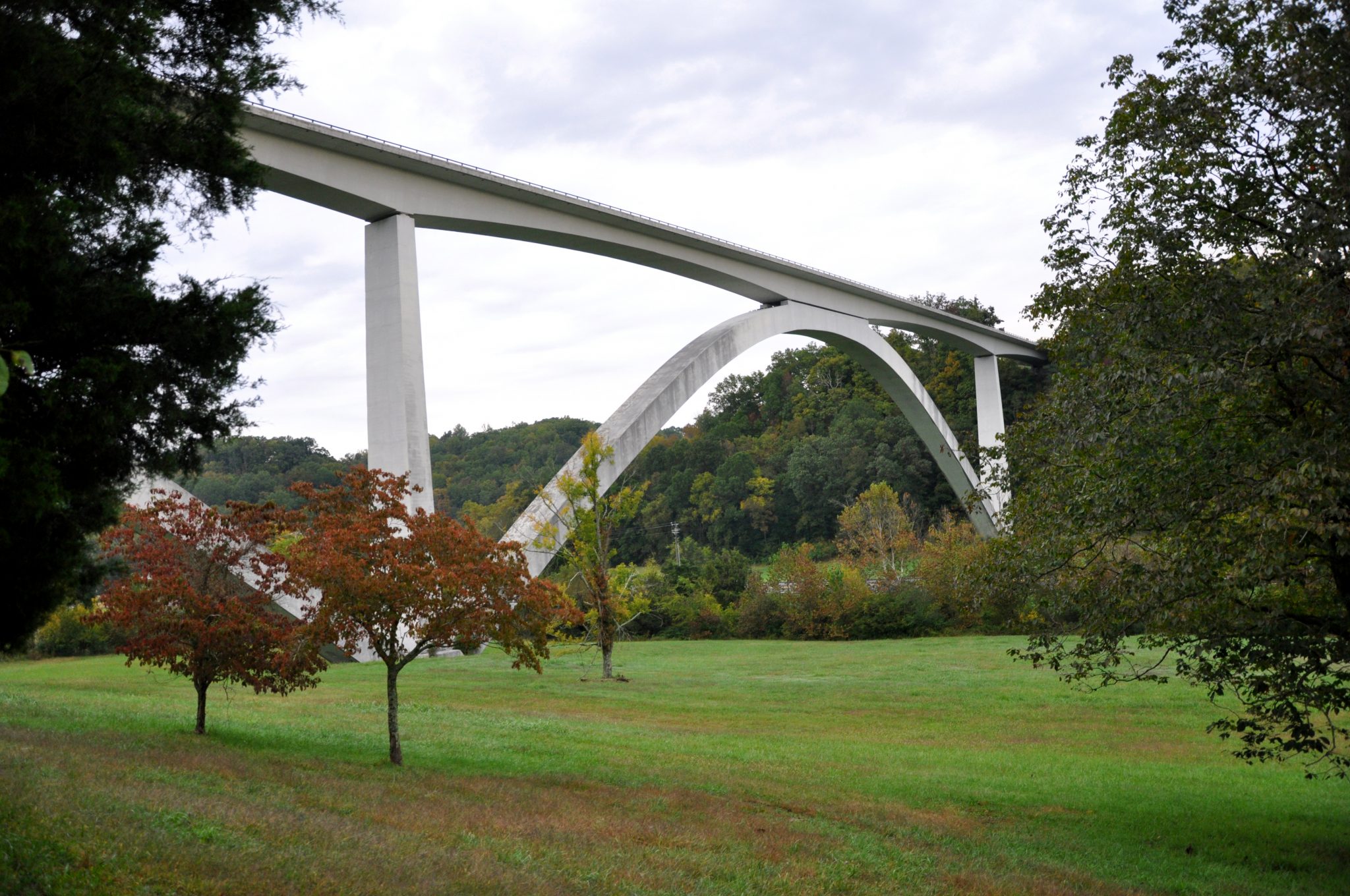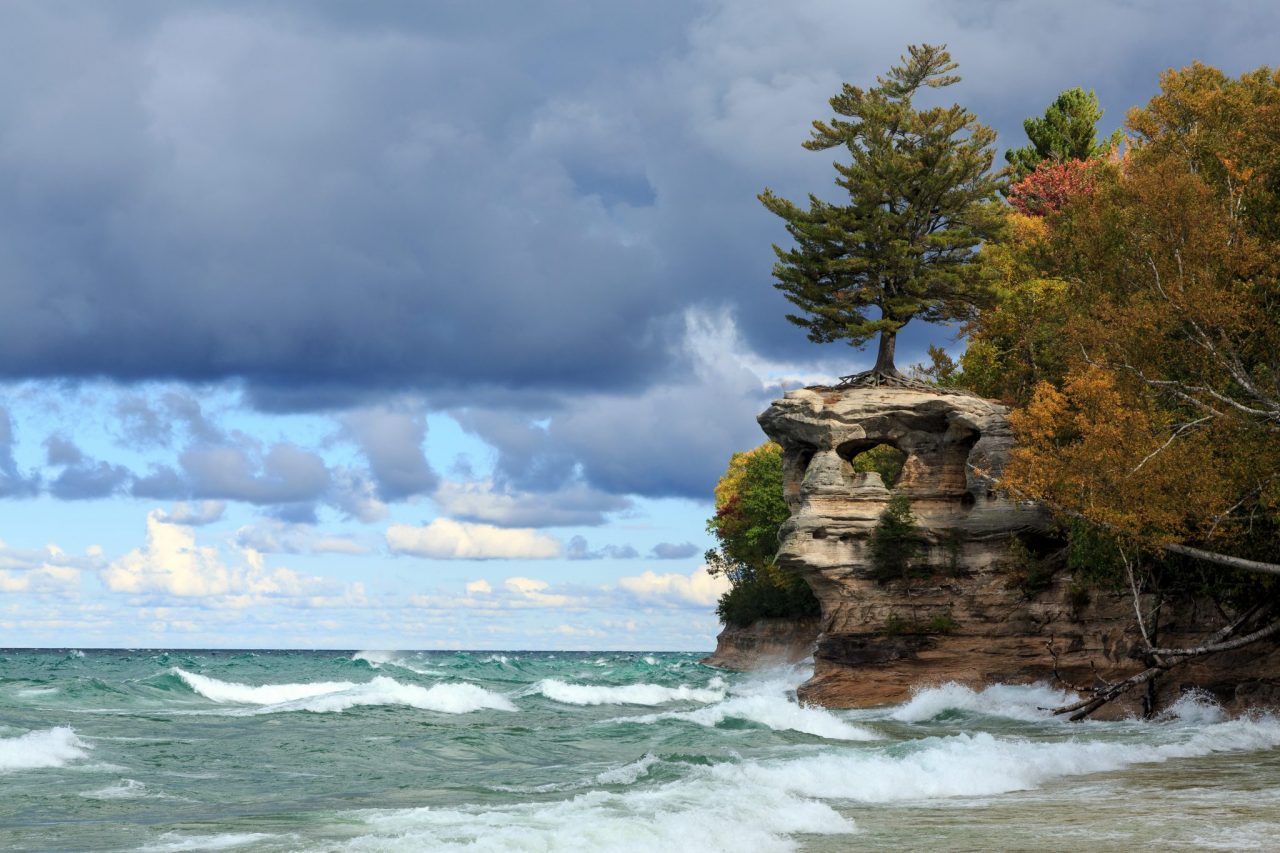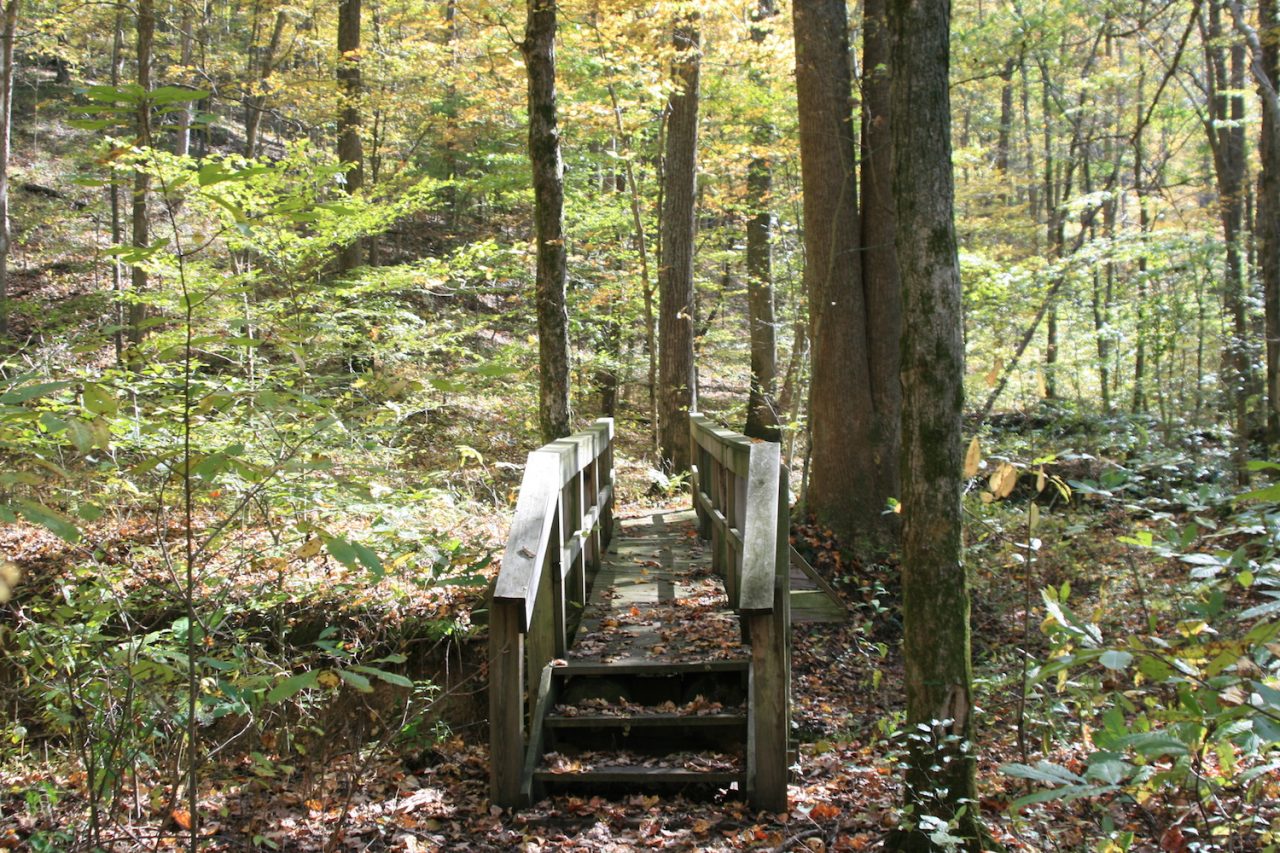The Natchez Trace Parkway winds its way from Natchez, Mississippi, to the outskirts of Nashville, Tennessee. The Trace began 10,000 years ago as buffalo and Indian trails. It became the first national highway of what was then the southwest, under authority of the US government, following treaties with the Chickasaw and Choctaw in 1801. The Trace provided a commercial route between Nashville and Natchez. Today, this historic 444-mile route offers history, scenery and discovery to all who drive it.
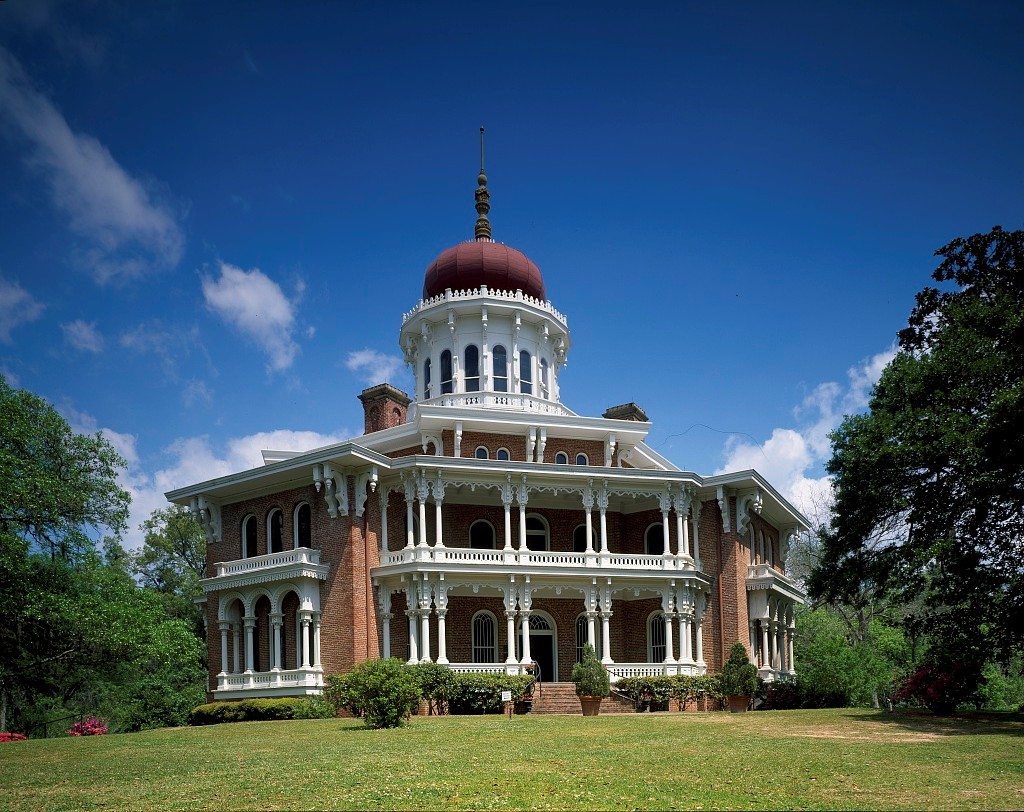
Via Wikimedia Commons
Begin in Natchez. Fond of house tours? Then, Natchez is the city for you, with grand plantation homes open for tours year round. They are: Longwood, Stanton Hall, Magnolia Hill, House on Elliott Hill, Rosalie, Auburn, Monmouth Plantation, Melrose and Linden. Dunleigh is currently closed and The Towers is open only by appointment. Consider buying the 3-house discount tickets to ease your wallet. Visit Frogmore to experience a working cotton plantation dating back to the early 1800s. You can stay in a plantation house at Brandon Hall – with stately with columns and wrap around porches it has been named one of the finest antebellum houses in the Deep South, located at mile marker 8.5. Look at Old Man River up close in Natchez Under the Hill, or walk the historic downtown. Dining options in Natchez abound, we suggest you sample Roux 61, The Carriage House Restaurant or Slick Rick’s. For the sheer fun of the whimsical building, stop at the larger than life Mammy’s Cupboard, and stay for their famous Hummingbird Cake or Coconut Meringue Pie. Mmm mmm.

Via Wikimedia Commons
This is “mound” country. At mile 10.3, is you can view the largest Mississippian period ceremonial mound along the Parkway—it’s the second largest in the nation. You can ponder the mysterious people who dwelled there so many centuries ago. Mount Locust, at milepost 15.5, is the last of the old inns called “stands” along the Natchez Trace. It is open every day except Christmas. Make a side trip to Port Gibson to view the ruins of Windsor Plantation ruins, a series of 23, 45-foot tall plastered brick columns with ornate iron capitals, once a gorgeous plantation home. It served as a Union hospital during the War (if you have to ask which one, you are not from the South), but went up in smoke in 1890.
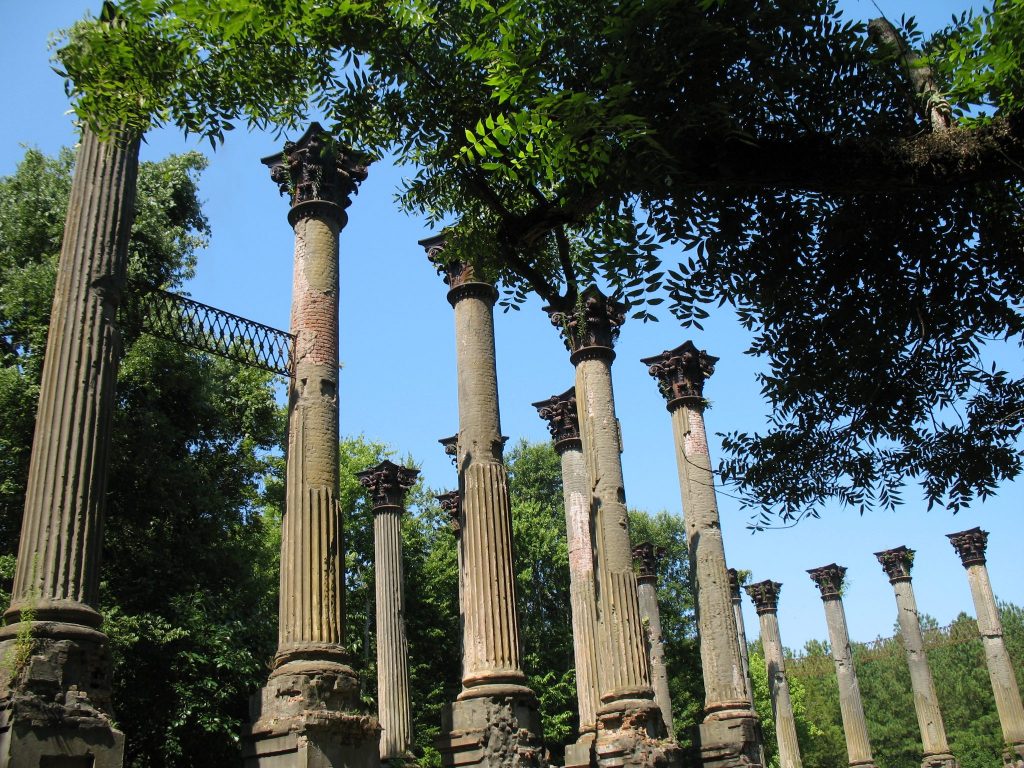
Via Wikimedia Commons
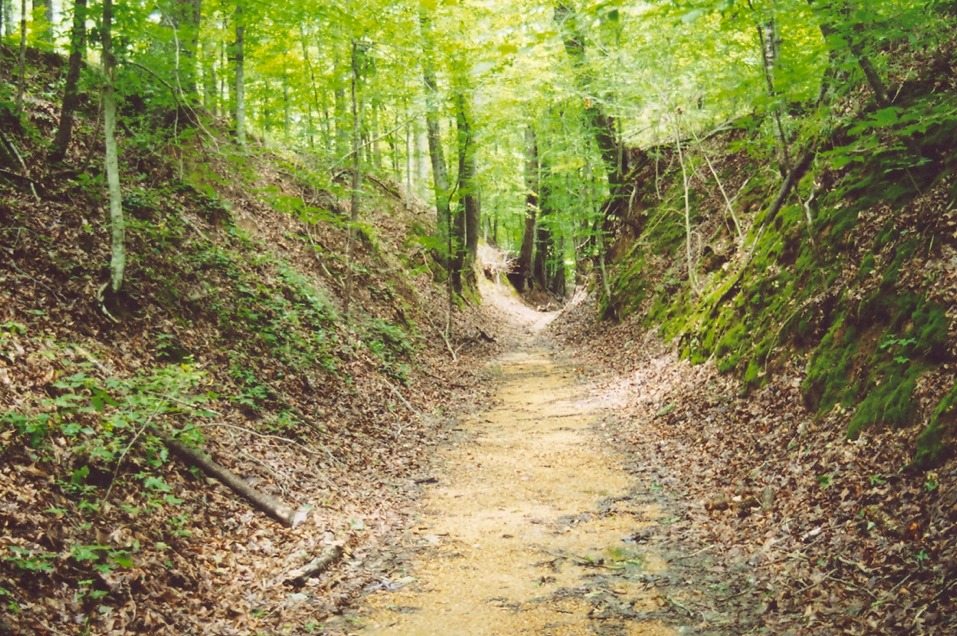
Sunken Trace Via Wikimedia Commons
To get an idea of just how many people traveled the Trace before you, stop at milepost 41.5 to see The Sunken Trace, a very deep rut made by the many thousands of people who passed by this spot, wearing the trail down. It is a short and easy walk down the trail. Go a bit farther along and you come to Rocky Springs – a once flourishing town, now abandoned, except for visitors like you, who enjoy the picnic and rest area at milepost 54.8.
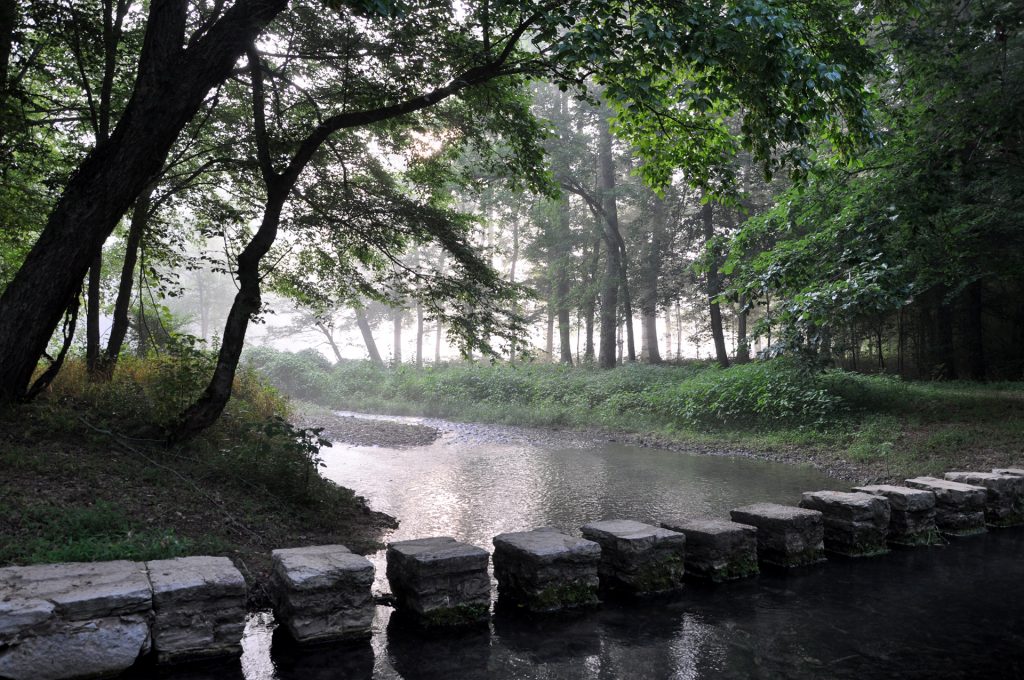
NPS Photo
Jackson is the capital and largest city in the state. Celebrated for its Mississippi Children’s Museum and the Museum of Natural Science, Jackson is also home to a lively arts scene. Tour the State House, the Eudora Welty House and Garden, Medgar Evers House and the Mississippi Governor’s Mansion. For great regional dining try Char, Two Sisters and Walkers. The Mississippi Craft Center in Ridgeland (just north of Jackson) is home to the Craftsmen’s Guild of Mississippi, where you can select from among fine handcrafted items by the guild’s 400 members. You will find the Center between the Ross Barnett Reservoir and the Natchez Trace.

Via Mississippi Children’s Museum
You get some great views as you pass alongside the eight mile stretch of the Trace next to Ross Barnett Reservoir. There are places to walk along the reservoir at the West Florida Boundary at milepost 107.9, or the Reservoir Overlook at milepost 105.6. By contrast, for one of the highest points along the Trace, stop at The Little Mountain Overlook at Jeff Busby. Another mound site to see is Bynum Mounds, six burial mounds, plus interpretive exhibits, at milepost 232.4. This site was excavated in the ‘Forties. About a half hour further north, at milepost 261.9 is The Chickasaw Village Site, made up of an outline of a Chickasaw winter home, summer home, and fort. There is a short nature as well as an access point to the Natchez Trace National Scenic Trail for longer walks
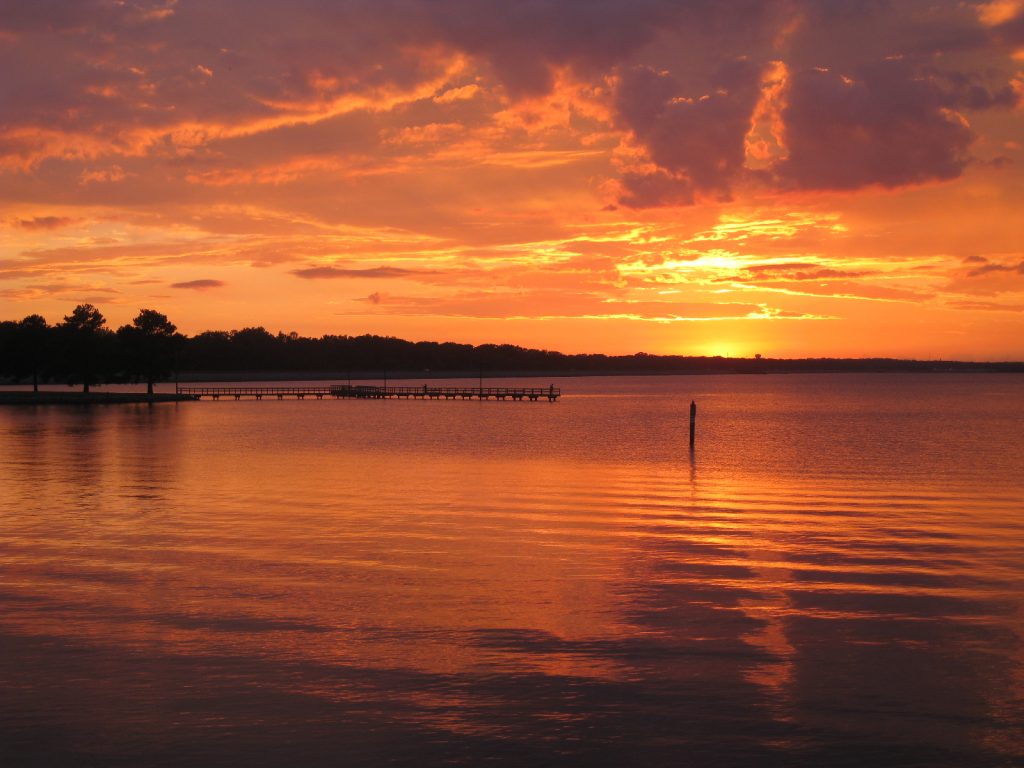
Ross Barnett Reservoir via Wikimedia Commons

Birthplace of Elvis in Tupelo via Wikimedia Commons
Tupelo is famous as the home of Elvis Presley; tour his birthplace home at the Elvis Presley Center. See some amazing cars at the Tupelo Automotive Museum. Take a stroll on Main Street and dine at the Café 212, Sweet Tea and Biscuits or the Blue Canoe. A visit to the city would not be complete without a stop at the Tupelo Hardware Store. The Tupelo National Battlefield is also here, and nearby is the site of
the Confederate victory at Brices Cross Roads. The Natchez Trace Parkway Visitor Center, at milepost 266, has a twelve-minute film, displays about the Trace, and the Eastern National Bookstore. You can also get your passport stamps here for the Natchez Trace Parkway, Natchez Trace National Scenic Trail, Tupelo National Battlefield, and Brices Cross Roads National Battlefield.

A short walk on the Old Trace at milepost 269.4 will take you to the mysterious gravesite of 13 Confederate soldiers. The Pharr Mounds Site at milepost 286.7 has interpretive waysides about the people who lived here 2000 years ago. Cross the Tennessee River at milepost 327.3. Two centuries ago, George Colbert operated a stand and ferry here. Have a picnic, launch a boat, or simply enjoy the riverside setting of Colbert Ferry. Visit the Meriwether Lewis Monument at milepost 385.9, to find out about one of America’s most illustrious explorers. The cabin offers displays about Lewis’ life. Take a five minute stroll along the Fall Hollow Trail at milepost 391.9 to the viewing platform to see the waterfall, and then continue on to see many other small cascades. Get off the main road at The Tobacco Farm and Old Trace Drive at milepost 401.4, to drive the Old Trace. It is one of two places where you can be on the precise route of the “Old Trace” in your car. Take note, it is a narrow one-way drive from south to north; RV’s are not permitted.
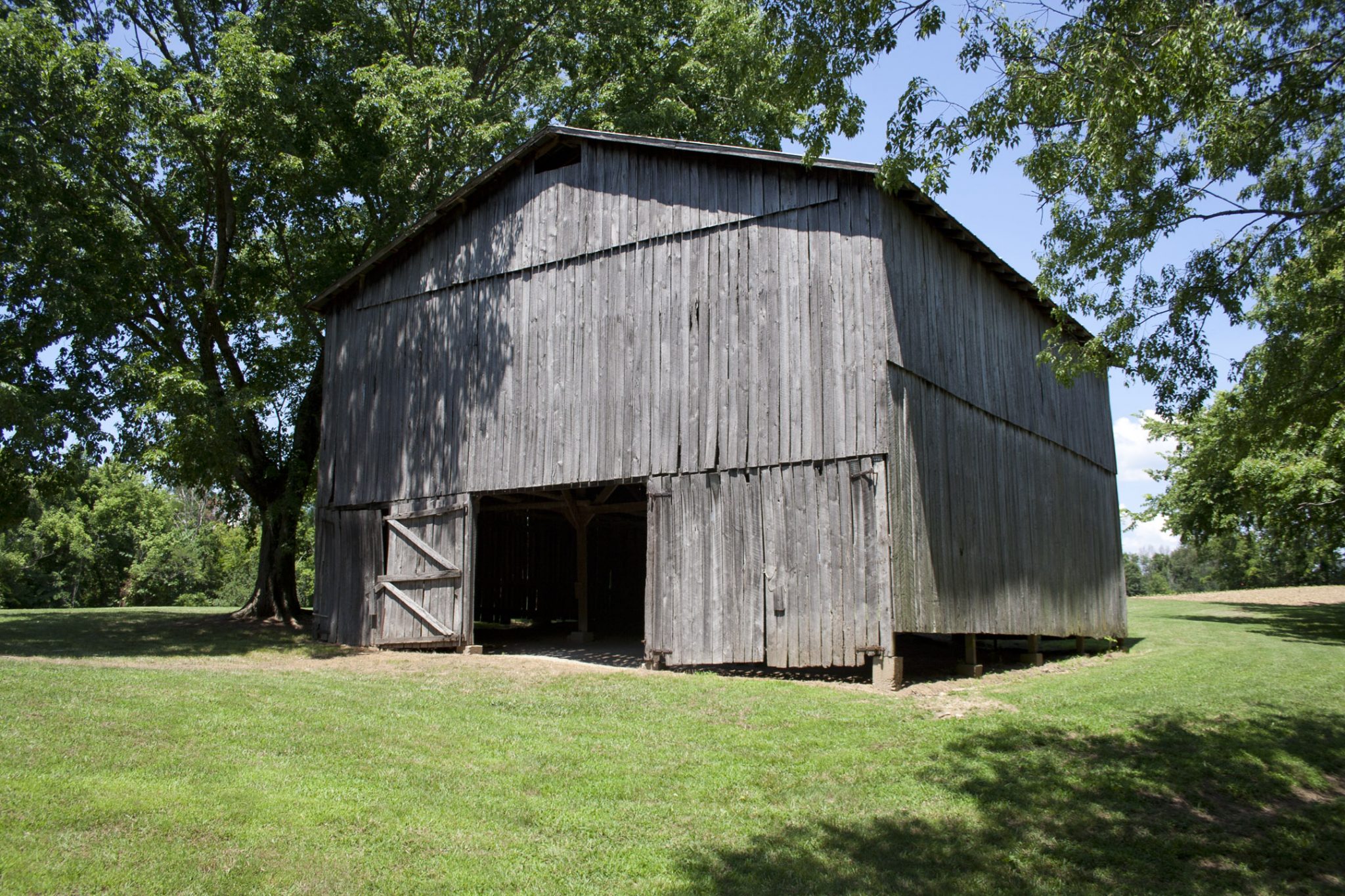
NPS Photo
Jackson Falls is located at Milepost Marker 404.7, viewing the waterfalls requires a 900-foot walk down a paved, stepped down path. There is a bench at the bottom for resting before you climb back up again. Many people call it their favorite spot along the Trace, but it is so well hidden that others have passed by for years without knowing it is there. You can see Birdsong Hollow at milepost 438, along with the award winning double-arched bridge 155 feet above the valley. At the northern end of the trace, at the Terminus near Franklin, Tennessee, stop at Loveless Café. Travelers call it an oasis of country charm and comfort. Famous for over half a century for their outstanding hot biscuits and country ham, you will find it the perfect ending to your journey along the Natchez Trace.
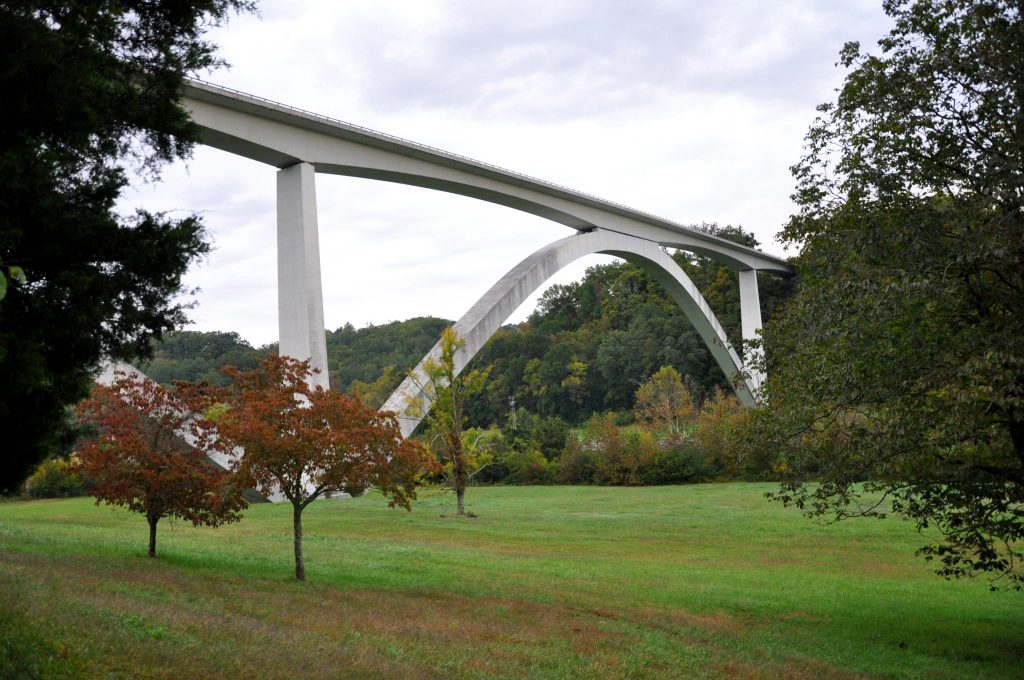
NPS Photo
If you have a bit more time: Drive over to The Museum of Appalachia at Clinton, Tennessee, which offers 30 original pioneer buildings, stories and artifacts, including a village store, saw mill, one room school house, the cabin Mark Twain was raised in, and docents who interpret the engaging wonders of this slice of Appalachian life. The small Cafe serves wonderful meals utilizing food grown in the museum garden.








 A short walk on the Old Trace at milepost 269.4 will take you to the mysterious gravesite of 13 Confederate soldiers. The Pharr Mounds Site at milepost 286.7 has interpretive waysides about the people who lived here 2000 years ago. Cross the Tennessee River at milepost 327.3. Two centuries ago, George Colbert operated a stand and ferry here. Have a picnic, launch a boat, or simply enjoy the riverside setting of Colbert Ferry. Visit the Meriwether Lewis Monument at milepost 385.9, to find out about one of America’s most illustrious explorers. The cabin offers displays about Lewis’ life. Take a five minute stroll along the Fall Hollow Trail at milepost 391.9 to the viewing platform to see the waterfall, and then continue on to see many other small cascades. Get off the main road at The Tobacco Farm and Old Trace Drive at milepost 401.4, to drive the Old Trace. It is one of two places where you can be on the precise route of the “Old Trace” in your car. Take note, it is a narrow one-way drive from south to north; RV’s are not permitted.
A short walk on the Old Trace at milepost 269.4 will take you to the mysterious gravesite of 13 Confederate soldiers. The Pharr Mounds Site at milepost 286.7 has interpretive waysides about the people who lived here 2000 years ago. Cross the Tennessee River at milepost 327.3. Two centuries ago, George Colbert operated a stand and ferry here. Have a picnic, launch a boat, or simply enjoy the riverside setting of Colbert Ferry. Visit the Meriwether Lewis Monument at milepost 385.9, to find out about one of America’s most illustrious explorers. The cabin offers displays about Lewis’ life. Take a five minute stroll along the Fall Hollow Trail at milepost 391.9 to the viewing platform to see the waterfall, and then continue on to see many other small cascades. Get off the main road at The Tobacco Farm and Old Trace Drive at milepost 401.4, to drive the Old Trace. It is one of two places where you can be on the precise route of the “Old Trace” in your car. Take note, it is a narrow one-way drive from south to north; RV’s are not permitted. 


